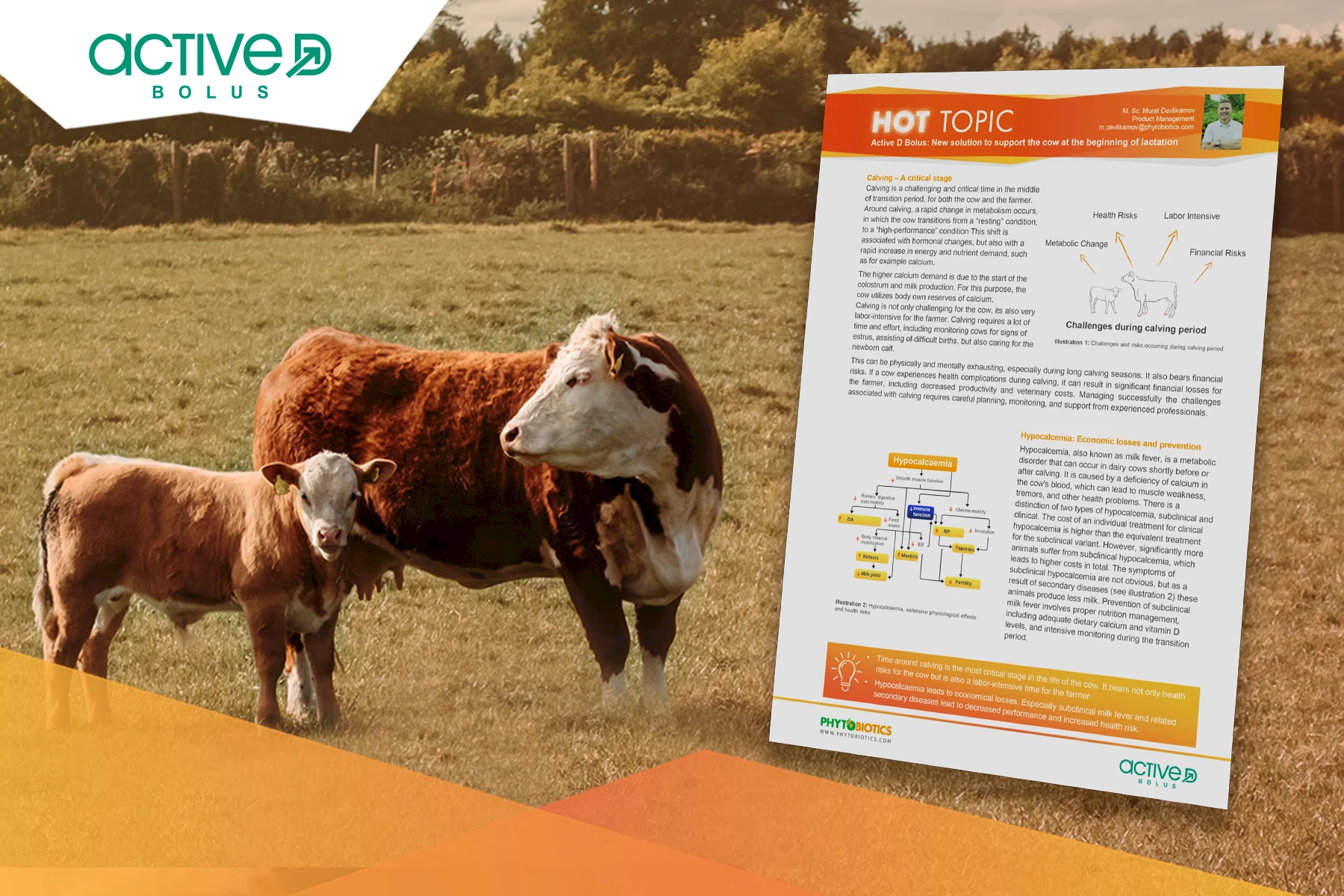
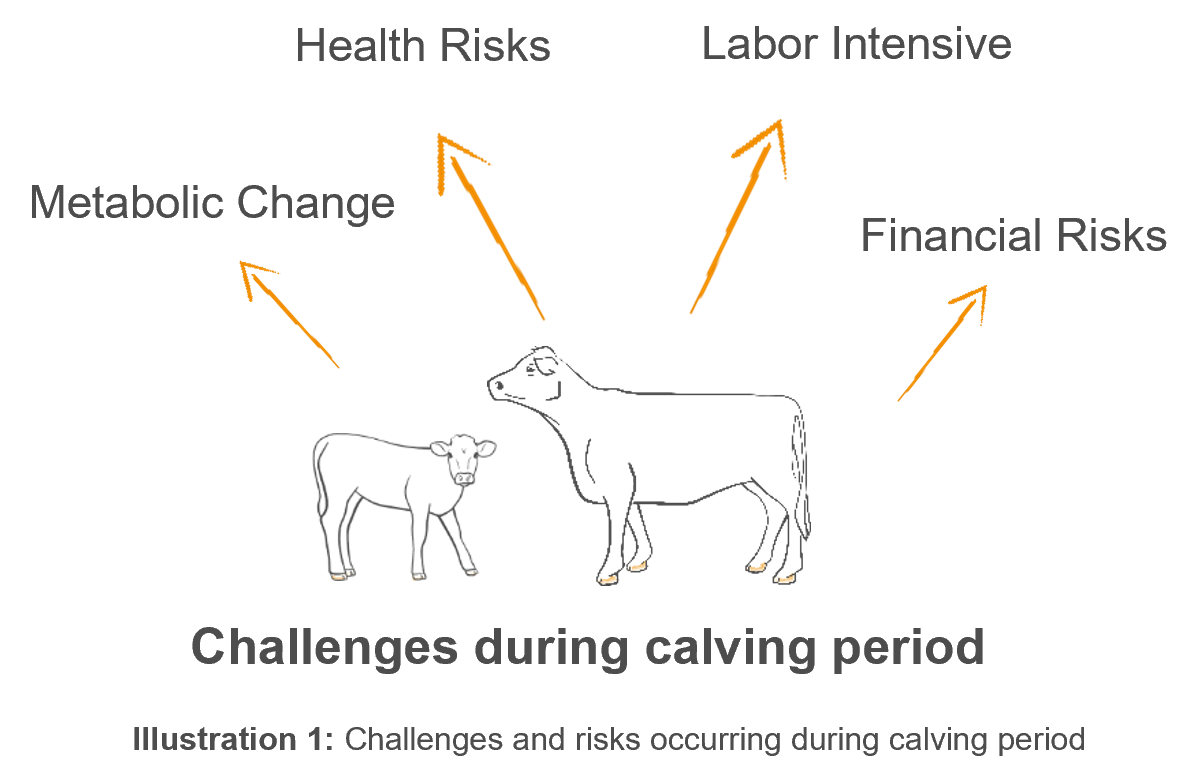
Calving– A critical stage
Calving is a challenging and critical time in the middle of transition period, for both the cow and the farmer. Around calving, a rapid change in metabolism occurs, in which the cow transitions from a “resting” condition, to a “high-performance” condition. This shift is associated with hormonal changes, but also with a rapid increase in energy and nutrient demand, such as for example calcium.
The higher calcium demand is due to the start of the colostrum and milk production. For this Financial Risks purpose, the cow utilizes body own reserves of calcium. Calving is not only challenging for the cow, its also very labor-intensive for the farmer. Calving requires a lot of time and effort, including monitoring cows for signs of estrus, assisting difficult births, but also caring for the newborn calf.
This can be physically and mentally exhausting, especially during long calving seasons. It also bears financial risks. If a cow experiences health complications during calving, it can result in significant financial losses for the farmer, including decreased productivity and veterinary costs. Managing successfully the challenges associated with calving requires careful planning, monitoring, and support from experienced professionals.
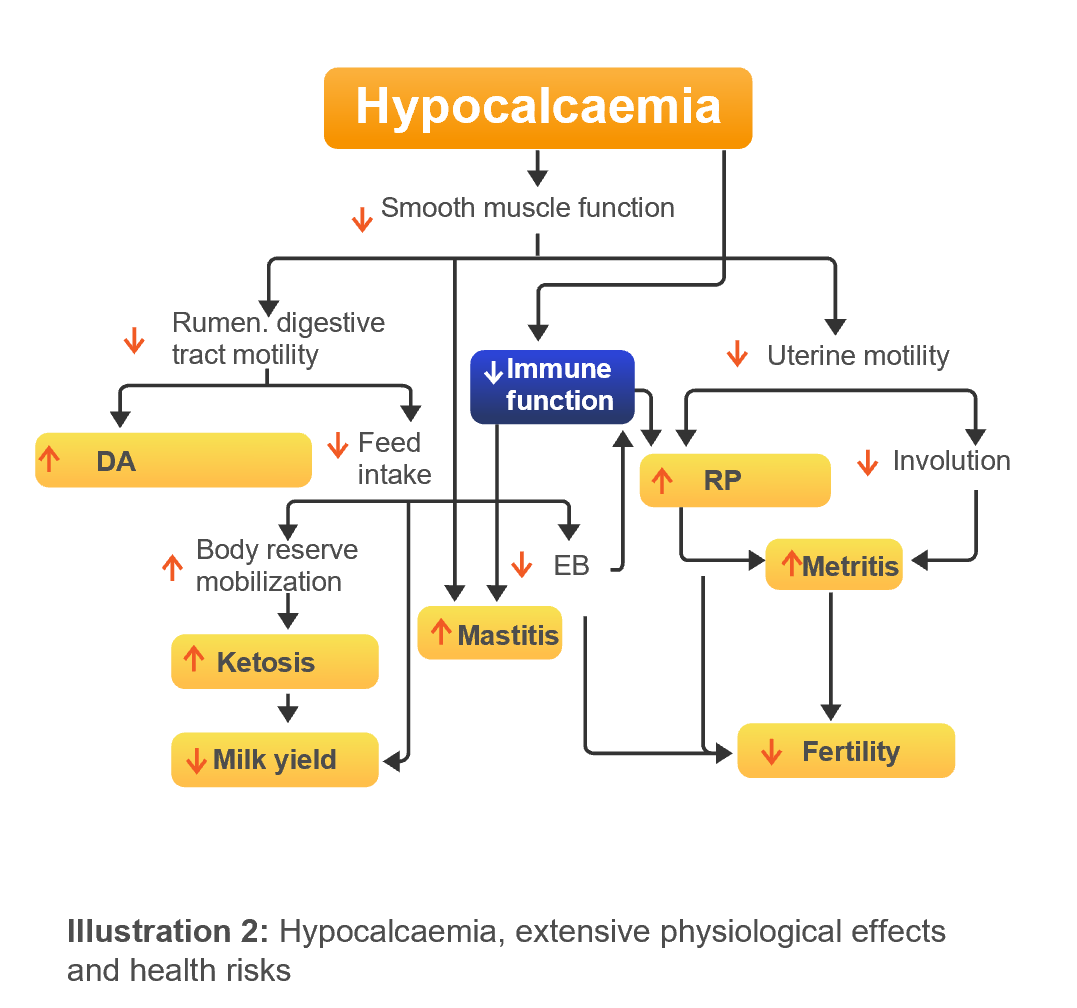
Hypocalcemia: Economic losses and prevention
ypocalcemia, also known as milk fever, is a metabolic disorder that can occur in dairy cows shortly before or after calving. It is caused by a deficiency of calcium in the cow's blood, which can lead to muscle weakness, tremors, and other health problems. There is a distinction of two types of hypocalcemia, subclinical and clinical. The cost of an individual treatment for clinical hypocalcemia is higher than the equivalent treatment for the subclinical variant. However, significantly more animals suffer from subclinical hypocalcemia, which leads to higher costs in total. The symptoms of subclinical hypocalcemia are not obvious, but as a result of secondary diseases (see illustration 2) these animals produce less milk. Prevention of subclinical milk fever involves proper nutrition management, including adequate dietary calcium and vitamin D levels, and intensive monitoring during the transition period.

Importance of vitamin D around calving period
Vitamin D is an essential nutrient in all stages of life. One of the primary functions of vitamin D is to regulate the absorption and utilization of calcium and phosphorus in the organism. These are essential for the development and maintenance of strong bones, production of milk and muscle contractions. Noteworthy is also the effect of vitamin D on immunity. Vitamin D helps to activate and enhance the function of immune cells, such as macrophages, T cells and B cells, which are important in fighting infections and diseases.
Shortly before calving, the cow's calcium level in blood drops but recovers after the first week of lactation. If the blood calcium drop too low or is restored too slowly, milk fever can occur. Since vitamin D improves calcium transport and absorption, it can help the cow get back to a stable condition faster. For this very reason, vitamin D must be given to the cow in a rapidly available form. Because it is also needed for the contraction of muscles, higher availability and better transport of calcium lead to less downer cows and a better start to lactation. Vitamin D injections are one of the established interventions in the management of hypocalcemia. However, a veterinarian is needed to administer an injection and additionally, it is not easy to estimate the right timing (prior calving) for the injection. A labor-saving alternative with the same metabolic benefit is offered by the Active D bolus, which is applied once directly after calving.
The innovative and simple Active D Bolus
Active D Bolus contains herbal and most available vitamin D metabolites combined with calcium. Because of its herbal origin, the active vitamin D is glycosylated. The glycoside is highly stable in the bolus and but is easily cleaved by microorganisms and enzymes in the digestive system of the cow. After the cleavage, the active form of vitamin D is released and can dock to a vitamin D receptor (Illustration 3). Administering the bolus directly after calving triggers quick calcium and phosphorus mobilization in the organism and counteracts the decrease of ionized calcium in blood. The bolus dissolves in the rumen within the first 7 days, thus ensuring a continuous supply of vitamin D during this critical phase, which is crucial for subsequent milk production. The bolus application offers important advantages. It enables a better start of lactation and supports higher resilience against disorders and pathogens. In addition, it is not labor intensive. Just one application in the first hours after calving and the job is done. Compared to conventional calcium boli, Active D Boli not only provides calcium as a "building block" to the animal, but it is rather a tool to make these building blocks available for the metabolism.
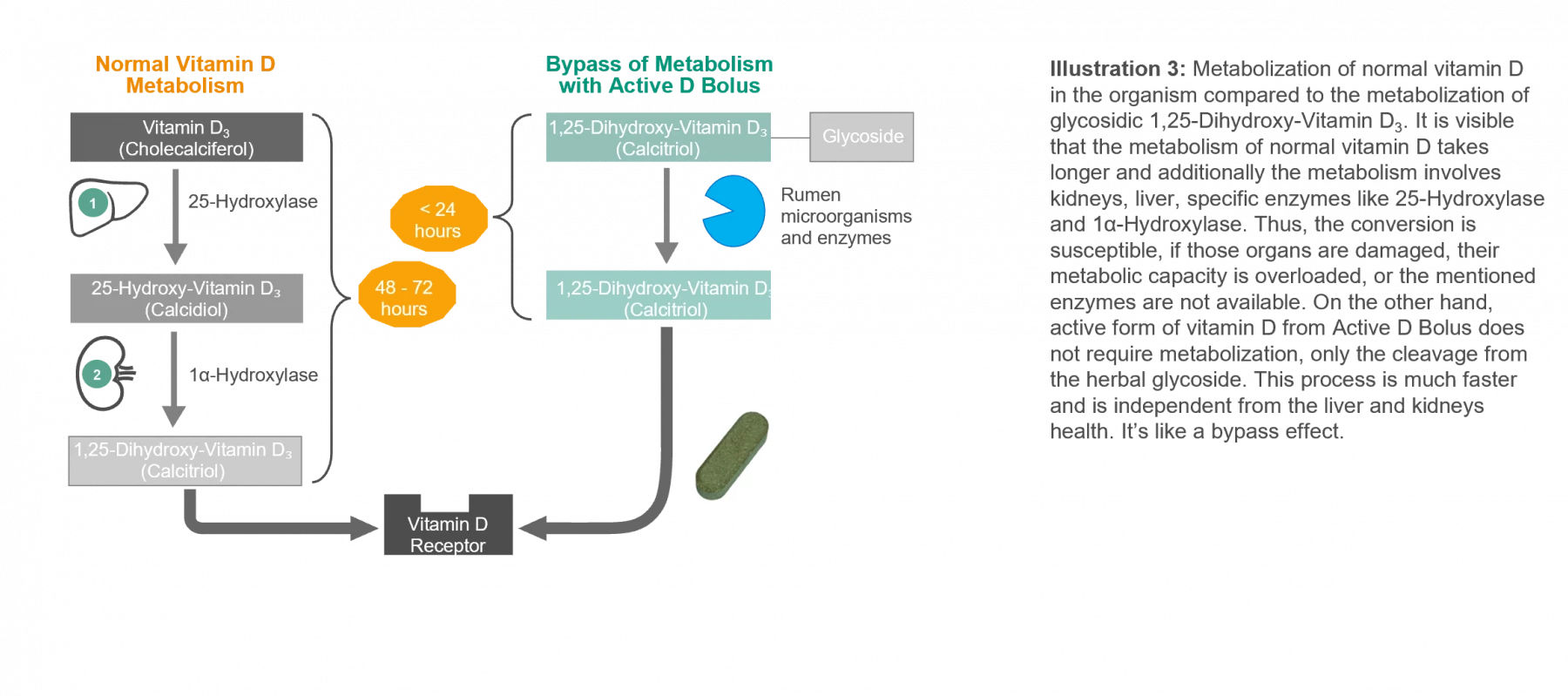

Successful experiences in the field
Active D bolus have been used since 2022. The first qualitative observations from farmers were: Decrease of cases of subclinical milk fever, better start into lactation and decrease of the number of downer cows. To confirm these findings, several studies monitored by veterinarians have been conducted and evaluated quantitatively. These studies have shown that by using Active bolus, the percentage of free (ionized) calcium in the blood was elevated and the increase of total calcium in the blood was faster after calving. Moreover, it has been reported that the milk yield in the first weeks increased compared to a control group and fewer secondary diseases caused by milk fever occurred. These diseases often are not considered as a result of subclinical milk fever, but they obviously lead to a high economic losses. Some of these studies are shown below.
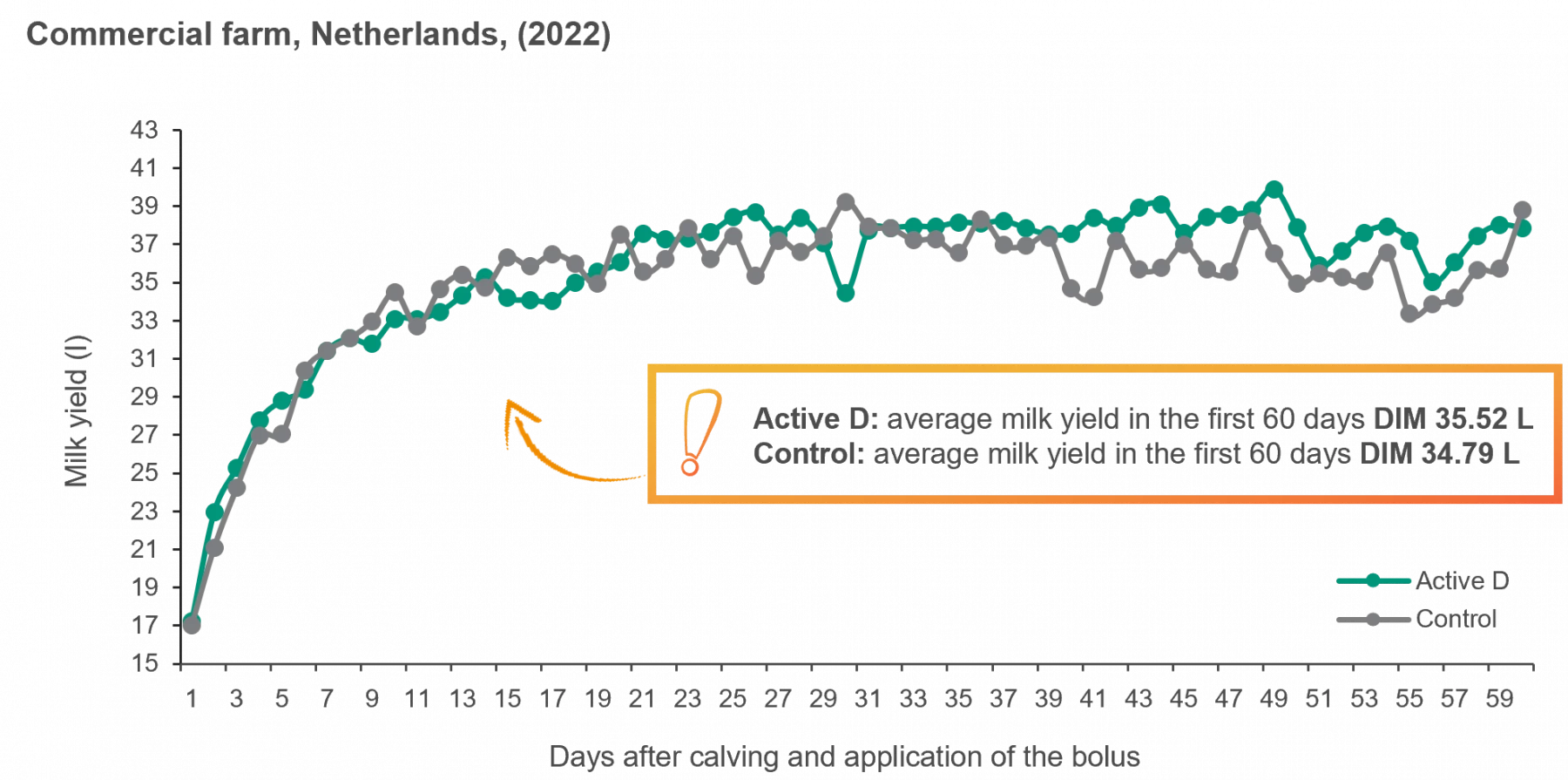
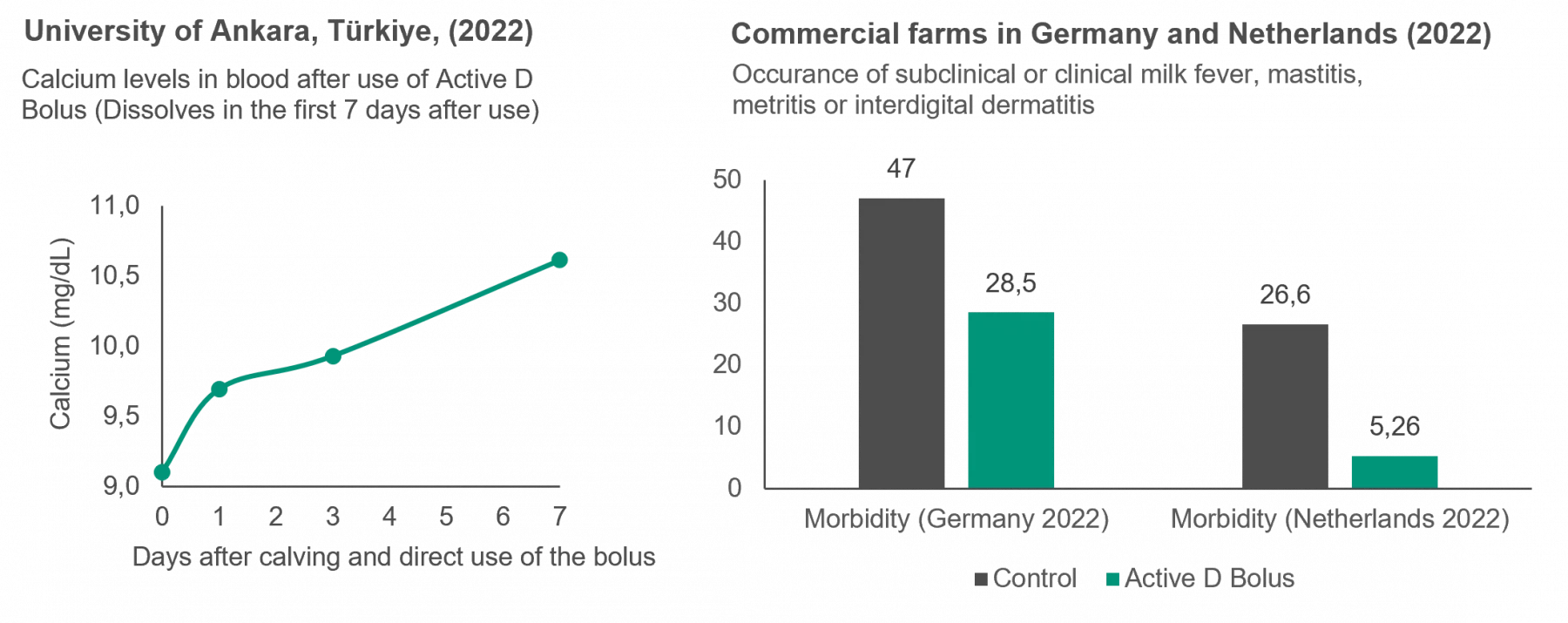


Murat Devlikamov studied Agricultural Sciences at the University of Giessen, Germany, and did his Master’s thesis on broiler nutrition. At Phytobiotics, he is the Product Manager of the plant-based product Active D. Murat conducts scientific research on targeted vitamin D supply to create practical solutions for animals in periods of high metabolic challenge.
Contact our experts or send us a message. We will contact you as soon as possible.